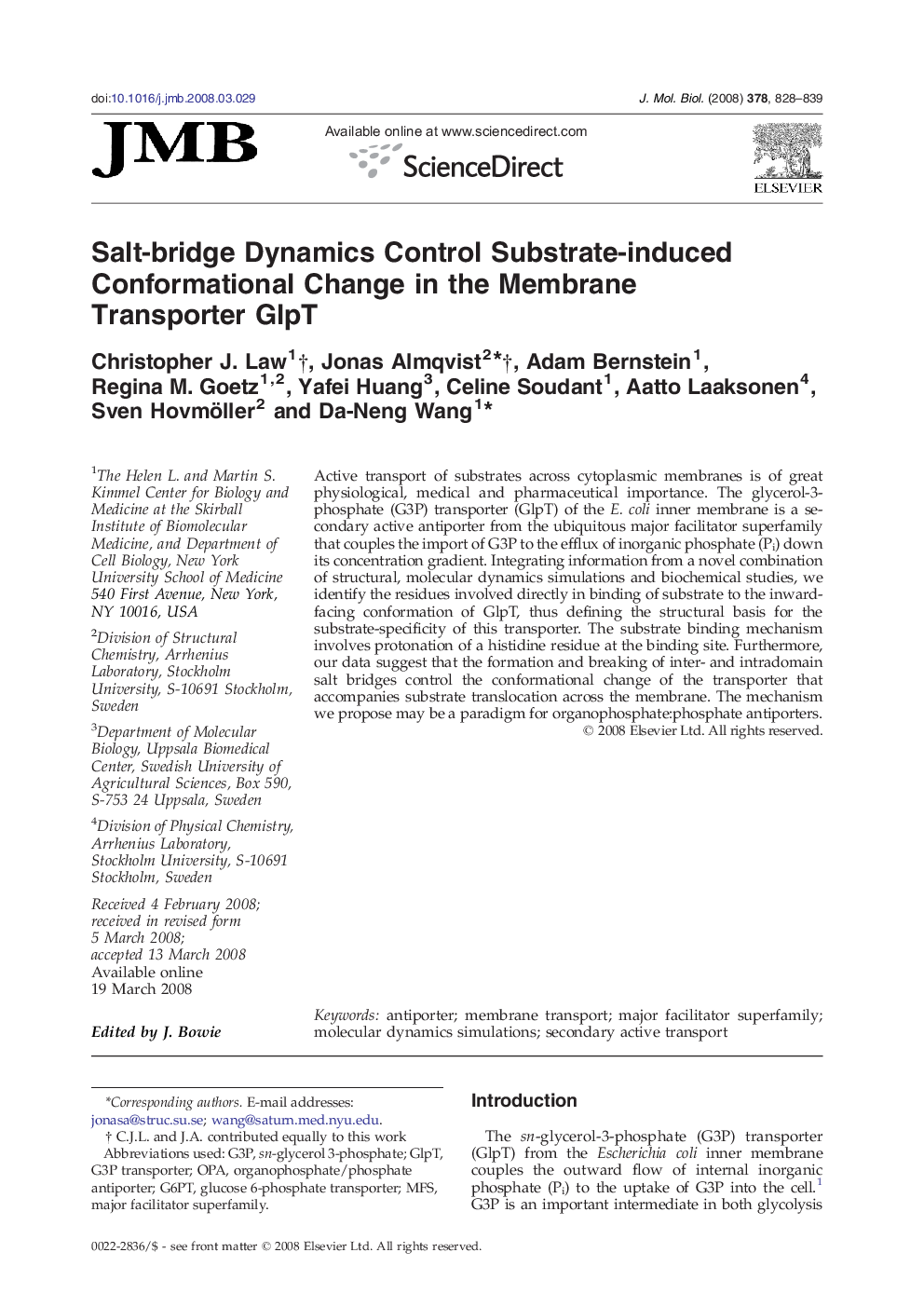| Article ID | Journal | Published Year | Pages | File Type |
|---|---|---|---|---|
| 2187391 | Journal of Molecular Biology | 2008 | 12 Pages |
Active transport of substrates across cytoplasmic membranes is of great physiological, medical and pharmaceutical importance. The glycerol-3-phosphate (G3P) transporter (GlpT) of the E. coli inner membrane is a secondary active antiporter from the ubiquitous major facilitator superfamily that couples the import of G3P to the efflux of inorganic phosphate (Pi) down its concentration gradient. Integrating information from a novel combination of structural, molecular dynamics simulations and biochemical studies, we identify the residues involved directly in binding of substrate to the inward-facing conformation of GlpT, thus defining the structural basis for the substrate-specificity of this transporter. The substrate binding mechanism involves protonation of a histidine residue at the binding site. Furthermore, our data suggest that the formation and breaking of inter- and intradomain salt bridges control the conformational change of the transporter that accompanies substrate translocation across the membrane. The mechanism we propose may be a paradigm for organophosphate:phosphate antiporters.
